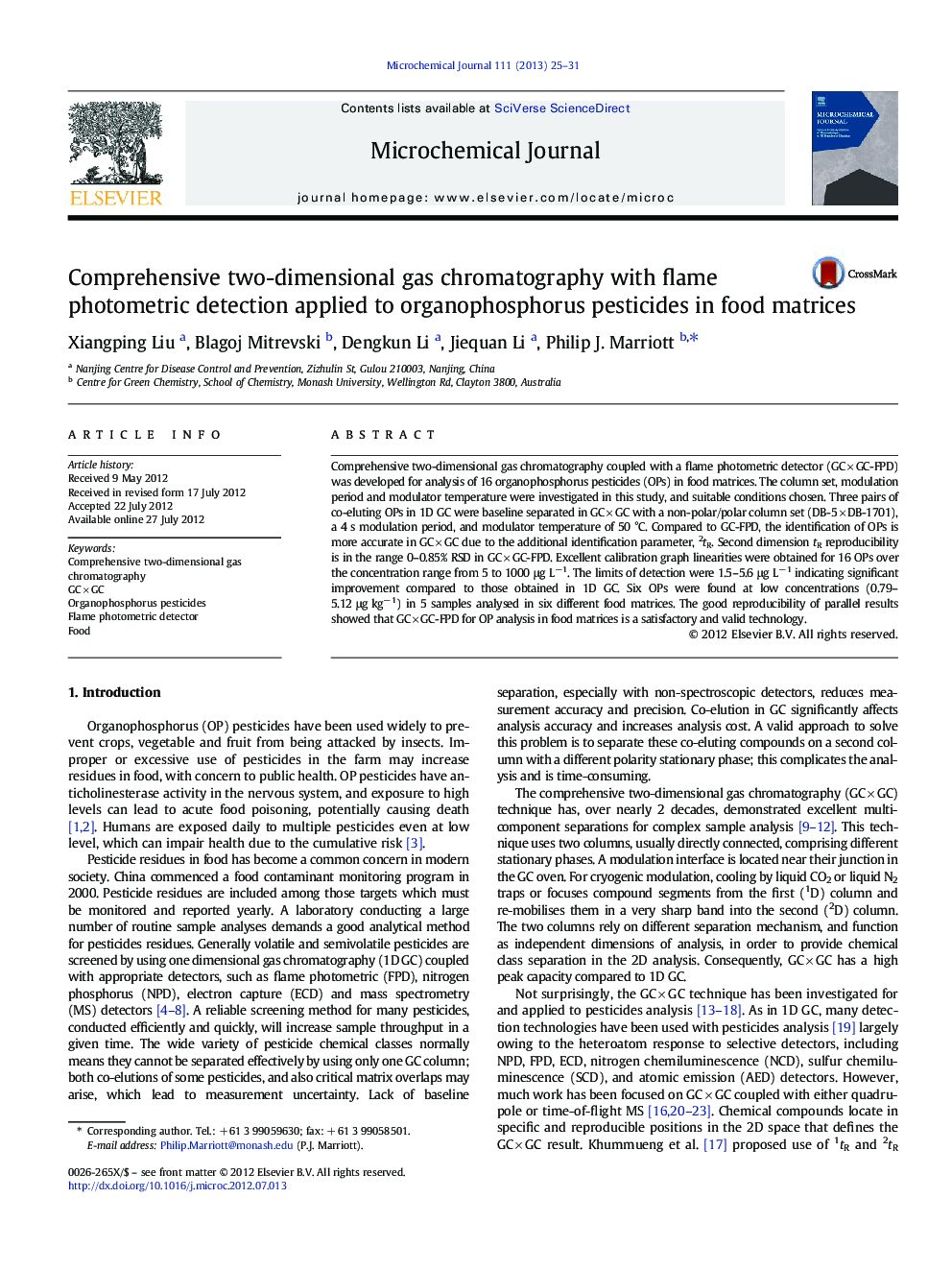| Article ID | Journal | Published Year | Pages | File Type |
|---|---|---|---|---|
| 1227796 | Microchemical Journal | 2013 | 7 Pages |
Comprehensive two-dimensional gas chromatography coupled with a flame photometric detector (GC × GC-FPD) was developed for analysis of 16 organophosphorus pesticides (OPs) in food matrices. The column set, modulation period and modulator temperature were investigated in this study, and suitable conditions chosen. Three pairs of co-eluting OPs in 1D GC were baseline separated in GC × GC with a non-polar/polar column set (DB-5 × DB-1701), a 4 s modulation period, and modulator temperature of 50 °C. Compared to GC-FPD, the identification of OPs is more accurate in GC × GC due to the additional identification parameter, 2tR. Second dimension tR reproducibility is in the range 0–0.85% RSD in GC × GC-FPD. Excellent calibration graph linearities were obtained for 16 OPs over the concentration range from 5 to 1000 μg L− 1. The limits of detection were 1.5–5.6 μg L− 1 indicating significant improvement compared to those obtained in 1D GC. Six OPs were found at low concentrations (0.79–5.12 μg kg− 1) in 5 samples analysed in six different food matrices. The good reproducibility of parallel results showed that GC × GC-FPD for OP analysis in food matrices is a satisfactory and valid technology.
► OP pesticide profiling by using GC × GC with FPD in P-mode offers excellent sensitivity and separation performance. ► Comparative 1 dimensional analysis leads to a number of peak overlaps. ► Matrix is largely transparent in the FPD P-mode detector, but FID shows significant matrix response. ► Peak position reproducibility in 2D space was found to be good.
